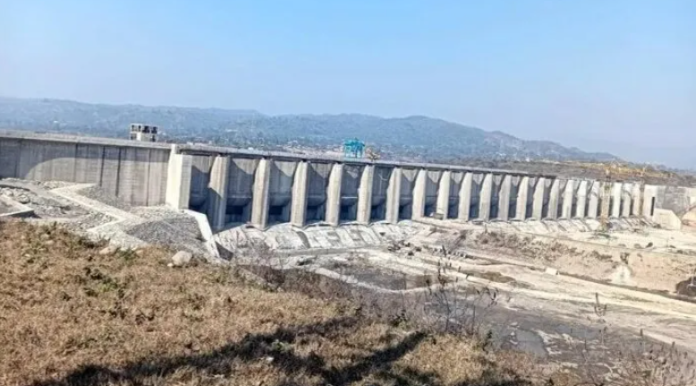With the completion of the Shahpur Kandi barrage, the water flowing from the Ravi River into Pakistan has effectively ceased. This development, which is situated on the border between Punjab and Jammu and Kashmir, represents a major change in the distribution of water resources, with the Jammu and Kashmir area now expected to benefit from the 1150 cusecs of water that were previously destined for Pakistan.
The redirected water will be used for irrigation, benefiting more than 32,000 hectares of land in the districts of Samba and Kathua. Despite facing challenges over the past thirty years, the Shahpur Kandi barrage project which is crucial for irrigation and hydropower is almost on the brink of completion. As per the terms of the 1960 Indus Water Treaty, Pakistan is in charge of the Indus, Jhelum, and Chenab rivers, while India has exclusive rights over the waters of the Ravi, Sutlej, and Beas rivers. With the completion of the Shahpur Kandi barrage, India is now able to make the most use of the waters of the Ravi River by diverting resources from the old Lakhanpur dam in the direction of Punjab and Jammu and Kashmir.
Shahpur Kandi Barrage
In 1995, the Shahpur Kandi Barrage Project foundation stone was laid by PV Narasimha Rao. However, the project was put on hold for more than four and a half years due to disagreements between the governments of Punjab and Jammu and Kashmir. While addressing a rally in the Haryana assembly, Prime Minister Narendra Modi promised to make sure that Indian farmers could effectively use the waters of the Sutlej, Beas, and Ravi rivers. He underlined that India has a legitimate claim to these waters and that Pakistan must stop wasting them. To ensure that every drop of water from these rivers reaches Punjab Jammu and Kashmir, a task force was subsequently formed.
India has built storage facilities like the Bhakra Dam on the Sutlej, the Pong and Pandoh Dam on the Beas, and the Thein (Ranjitsagar) on the Ravi as part of several water management projects. With the help of these programs and others like the Indira Gandhi Nahar Project and the Beas-Sutlej link, India is now able to use nearly all (95%) of the water from the eastern rivers. However, below Madhopur, about 2 million acre-feet of the Ravi River’s water flowed to Pakistan without being used. India is well-positioned to utilize these water resources, promoting agricultural and economic growth in Jammu Kashmir and Punjab, with the completion of the Shahpur Kandi barrage.
Indus Water Treaty
Under the World Bank’s supervision, the Indus Water Treaty was signed in 1960 between India and Pakistan to govern the use and distribution of the Indus River system. The Indus, Jhelum, and Chenab rivers are all under Pakistani control, but India retains complete sovereignty over the waters of the eastern rivers, the Ravi, Sutlej, and Beas. Through the provisions of the treaty, India can further improve its water management capabilities by establishing storage facilities on the western rivers.

